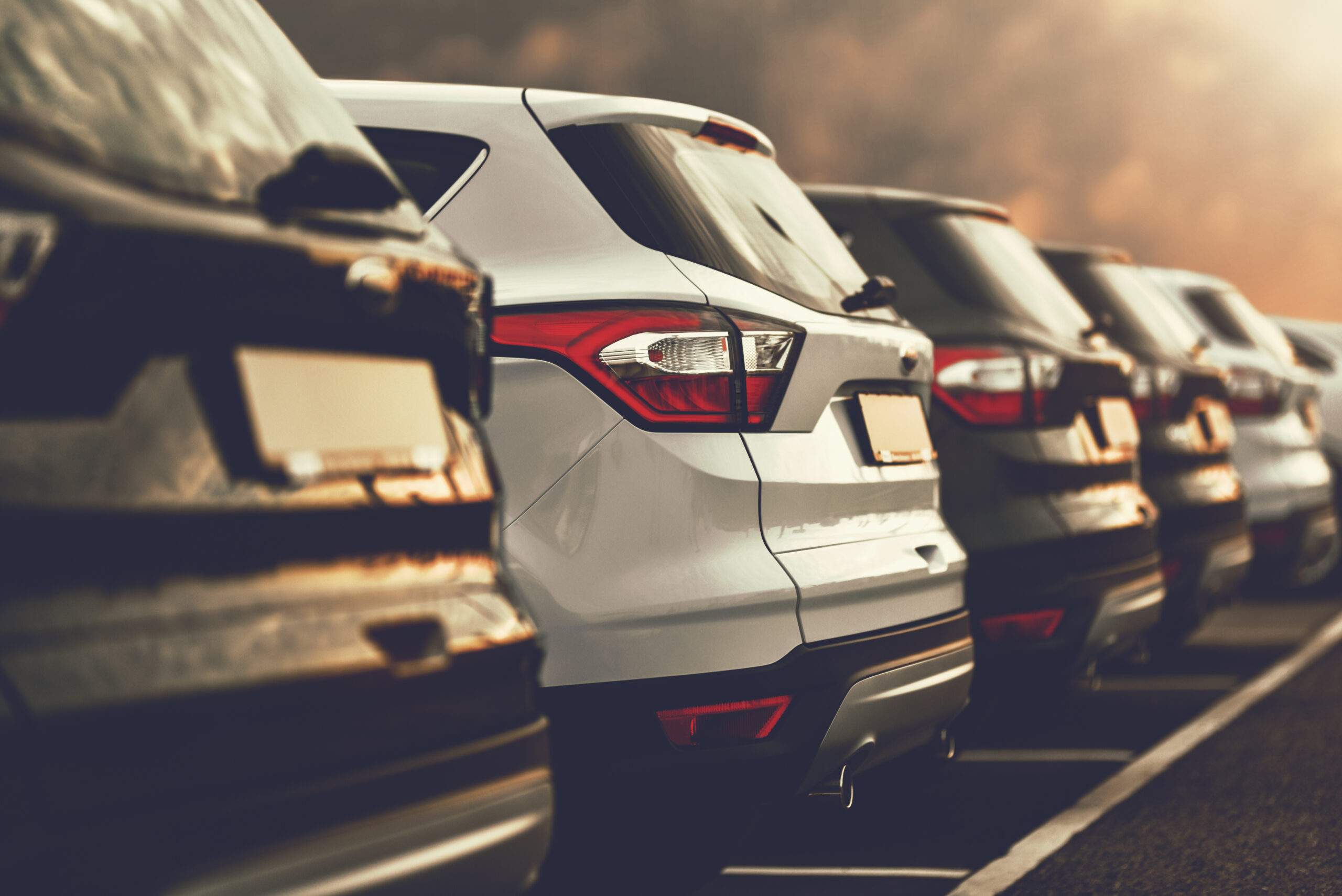Torben Robertson
9 mins
What businesses need to know about US car insurance
As a business owner in the US you need to know about car insurance. Employees who drive need to have proper coverage so your business is not at risk.

Follow us on LinkedIn
Our PageBusiness Car Insurance in the United States.
Every car on the road needs auto insurance. If you have employees that drive, they too need insurance. We will get into the specifics of business insurance below, but first let us review the basics of auto insurance.
Kind of coverage in US insurance
Liability coverage
Liability coverage covers you in the event of an accident in which you are at fault, and you injure other people or do damage to their property. Liability coverage is the minimum insurance that you must carry on your vehicle. It is mandated by every state.
There are two ways that liability policies are often organized. “ They are “split limit” and “combined single limit”.
Split limit plans are divided into coverage for injury and coverage for property damage. Those will be specified like this: 50/100/25. This means that the policy could pay out $50,000 per injured person, $100,000 total for injuries, and $25,000 for property damage.
Combined single limit policies are presented as a single figure (e.g. “100”) and provide one value to cover injury and property damage when you are involved in an accident.
Combined single limit is potentially preferable. Imagine that you are in an accident that causes $60,000 worth of injuries, and $40,000 dollars worth of property damage. If you have a split limit plan of 50/100/25, you will be on the hook for $10,000 for injuries and $15,000 for property damage. However, if you have a combined single limit of 100, your entire liability is covered.
State Minimums
The minimum required liability insurance varies by state.
The figures just mentioned — 50/100/25 — are Alaska’s state minimums. Those are among the highest. Wisconsin’s state minimum coverage is 50/100/55, which is the highest in the US. Florida by contrast requires very little: 10/20/10.
100/300/100
An alternative to state minimums is a 100/300/100 plan. This provides $100,000 for injuries to a single party, $300,000 for all injuries, and $100,000 for property damage.[1] 100/300/100 is the minimum that Cardata recommends for our clients.
It is not unreasonable to expect that costs will exceed state minimums. According to the CDC, 200,000 people were hospitalized in 2012 because of a car accident. The average cost of their visit was $57,000.[2] If someone sustains fatal injuries in an accident, costs can rise above $1,000,000.[3]
PIP: Personal Injury Protection
Personal injury protection (“PIP”) is the counterpart to the injury section of liability insurance. It covers you when you are injured in a car accident caused by another driver, or by yourself.
It is important to have it because your own injuries are not protected by liability insurance, which only applies to injuries sustained by another person. If you cause an accident, your insurer should cover the injuries inflicted on the people in the vehicle you struck, but they will not cover your own. PIP protects you when you are at fault.
It also protects you when you are faultless, like being struck by someone else on the road,
Comprehensive coverage
Comprehensive coverage does not, despite its name, cover everything. Rather, it covers damage done to your vehicle from uncontrollable events. It covers damage done by natural disasters.
If you are on the Gulf Coast, this insurance coverage will see you through hurricanes; on the West Coast, it will compensate you for damages done by earthquakes and fires. It will also cover damage caused by striking animals or birds.
It does not cover damages incurred by striking human-made objects like parking meters or stop signs.[4] Nor does it cover acts of war.[5]
Collision Coverage
Collision coverage is the kind of insurance that covers damage to your own vehicle when it is involved in a crash. The crash could be your fault or not, and it could be with another vehicle or an object. Damage to your vehicle, but nobody else’s, is covered by collision coverage.
Unlike liability insurance, state governments do not require you to have collision coverage.[6]
There are, however, cases in which you are required to add collision insurance to your policy. If you are leasing your car, or have a car loan, the leaser or lender will generally require that you purchase this type of coverage. This is so you have the funds to pay off the car if it is totalled in an accident.[7]
Medical Payments Coverage
This coverage is for medical expenses in a variety of categories. It covers everything from hospital visits to dental care to funerals. It covers you whether you are at fault or not. You and the passengers in your car are protected.
You are also protected if you are a pedestrian struck while walking.
Medical payments coverage does not apply to time off work and lost wages.[8]
Uninsured Motorist Coverage
While liability insurance is mandated by nearly every state government, not everyone buys it. In fact, there are about 32 million uninsured drivers in the United States.[9] The law of averages tells us that there is a good chance that an accident with one of them will happen.
Uninsured motorist coverage kicks in when the driver at fault does not have liability insurance to pay for the damage inflicted to you and your property.
“Underinsured motorist coverage” is sometimes grouped with “uninsured”.. If there is a gap between the driver’s liability coverage and the actual costs of the damage to you and your property, this type of insurance will make up the difference. State minimums can be insufficient when faced with the actual costs of an accident.
Many states require you to carry un- and under-insured coverage on your policy.[10]
Gap Insurance
Gap insurance covers the difference between what your car is worth and what you owe for it. You might have a loan on your car worth $30,000, but the vehicle, when totaled, might be assessed for only $25,000. In that case, gap insurance steps in to cover the $5,000 difference.[11]
Because of depreciation, in the first few years of a car’s life, the value of the car is often lower than the value of the loan taken out for it.
No Fault States
In order to reduce the strain that motor vehicle accidents place on legal systems, many states have introduced “no fault” systems. These contrast with tort systems, in which one of the drivers involved in a collision is always found to be at fault. In no fault states, you are often required to carry PIP.[12]
Protecting Your Business
Depending on your business vehicle program, you may need to purchase commercial vehicle insurance, or you may be able to add a “business use” endorsement to your personal policies.
There are two categories into which business vehicles will fall. They are either owned, hired, or leased by the business; or owned, hired, or leased by employees of the business. In the former case, you probably need commercial auto insurance. In the latter, a business use designation may suffice.
Commercial auto insurance
Commercial auto insurance is ideal for fleets or individual cars owned by a business.
Large fleets of vehicles that are used for operations, for example electric or telecommunications work, need commercial policies. Small businesses might need the coverage too, if the work conducted involves transporting goods or people for fees. Taxis, even if privately owned, should be covered by commercial policies.
This type of auto insurance has higher premiums because the risks involved in commercial work are greater.
Non-commercial business auto insurance
If a business has drivers that use their own vehicle for work, personal auto insurance may be sufficient. However, if the personal vehicle is driven for business purposes, it will often be necessary for the personal policy to have a “business use” endorsement.
This endorsement is apposite for sales people, territory managers, and anyone else in a company that regularly calls on clients. Because they do not transport goods or people, business use designations are adequate.
This designation is desirable because it is less expensive. Commercial auto insurance covers more situations, but is significantly more expensive. So when an employee uses their personal vehicle for business, and not for transportation or any other kind of heavy-duty work, business use endorsements are more cost effective.
Verification
Starting employees off on the right policy is crucial, but each policy also needs to be authenticated periodically. Every time an employee’s policy comes up for renewal, if the vehicle is still in the enterprise’s service, it should be reviewed.
Failing to verify employee policies could leave a company open to the risks we discussed above, in the section on insurance types.
Do I need expert advice?
Deciding between commercial and business use policies can be difficult, since a company’s staff may engage in a range of activities with various vehicles.
Moreover, insurance companies in the United states number more than 100. Each policy is different, but needs to be verified to mitigate risk. Cardata is familiar with every American insurance provider’s policy, and verifies drivers’ policies exactly when necessary.
Reducing risk is just one benefit of retaining Cardata’s services. Cardata also reduces spend, by ensuring that only those employees who need business use designations receive them, and advising on how to switch off expensive vehicle programs.
Fleets are enormous expenses for companies, and commercial auto insurance is just part of that burden. Cardata advises companies on transitions away from fleet, toward vehicle reimbursement programs which leverage the savings of business use endorsements.
If you want to learn more, get in touch today.
Disclaimer: this article contains no legal advice. It is written exclusively for entertainment and edification. If you need legal advice regarding anything in this article, contact a lawyer.
References and Further reading
[1] https://www.consumerreports.org/cro/2013/05/4-big-insurance-mistakes-to-avoid/index.htm
[2] https://www.cdc.gov/vitalsigns/crash-injuries/index.html
[3] https://www.powers-santola.com/blog/much-auto-accidents-really-cost/
[4] https://www.usnews.com/insurance/auto/everything-you-should-know-about-car-insurance
[5] https://www.iii.org/publications/insuring-your-business-small-business-owners-guide-to-insurance/specific-coverages/business-vehicle-insurance
[6] https://www.usnews.com/insurance/auto/collision-car-insurance#:~:text=car%20insurance%20works.-,What%20Does%20Collision%20Insurance%20Cover%3F,pole%2C%20tree%2C%20or%20fence.
[7] https://www.allstate.com/tr/car-insurance/what-is-collision-insurance.aspx
[8] https://www.thehartford.com/aarp/car-insurance/medical-payments-coverage
[9] https://www.bankrate.com/insurance/car/uninsured-motorist-statistics/#:~:text=How%20many%20uninsured%20drivers%20are,eight%20drivers%2C%20says%20the%20IRC.
[10] https://www.allstate.com/tr/car-insurance/uninsured-motorist-coverage.aspx#:~:text=Uninsured%20motorist%20coverage%20helps%20you,the%20limits%20in%20your%20policy.&text=In%20that%20situation%2C%20the%20other%20driver%20would%20be%20considered%20underinsured.
[11] https://www.usnews.com/insurance/auto/everything-you-should-know-about-car-insurance
[12] https://www.carinsurance.com/no-fault-states.aspx
Share on:


